Last year, when I was new to my school and new to my role, my biggest focus was to ‘seek to understand‘. Now that I have had that first year (and what a year it was!) to learn about the school, experience the context and build relationships, I feel I am ready to move on to a new professional goal – supporting teacher agency.
New-ish goal might be more accurate.
Last time I was out of the classroom I was experimenting with Ed Camps and other models of Personalized Professional Learning and I was having some major shifts in thinking from working with adult learners. But it wasn’t until I found myself called back into the classroom that I began to find my identity as an agency-supportive educator. That’s when I was able to ‘risk and reflect‘ when working with my Grade 4s and then embarking on the collaborative adventure that was Studio 5. That’s also when I began to dabble with Agency PD to support schools around the world with their journey.
But now it’s time to ground that passion and that goal in this context with this staff. And boy, am I lucky with this staff! ❤️
I am a firm believer that the medium is the message. And learning through agency can be just as (if not more!) powerful than learning about agency. Therefor I believe that putting my eggs in the basket of supporting teacher agency will have the biggest impact on teachers supporting the agency of their child-learners.
So as I work with my principal and the rest of our school’s Academic Leadership Team to get ready for a new (and unprecedented) school year, there have been some specific agency-supportive ‘moves’ I have tried to attempt to begin the year respecting and supporting the agency of the wonderful teachers at my school.
Here’s what I’ve been experimenting with so far:
Town Halls
No doubt this year there is lots of new and lots of unknown. Lots of differences and lots of change. So as my principal and I have been thinking through approaches to this unique year, we have intentionally attempted to make decisions with our staff, instead of for our staff.
We hosted a ‘Town Hall’ and shared our current thinking with our whole Primary staff on things like the structure of the day, scheduling, first UOI of the year, Family-Led conferences and the public planner.

Then we invited them into an adapted, asynchronous Tuning Protocol where they could share their questions and feedback with us.


Then we coded and analyzed ALL that data!

Then we organized the trends in the data to be able to feedback to staff and respond.

I then recorded and shared videos responding to the major questions and feedback and created a pathway for further questions and feedback.
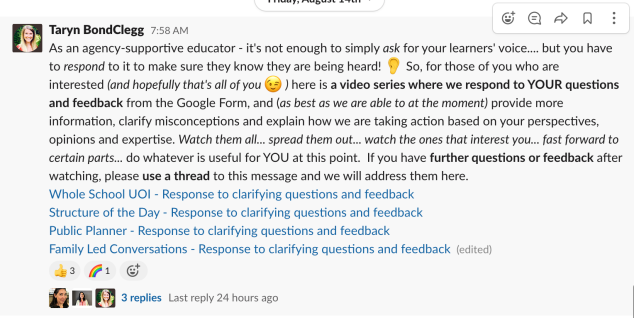

Think Tanks
There are some things we are trying to build and decide as leaders that we have less experience with than teachers. The last few months of the school year, teachers were on the ground with distance learning and therefor the ones with experience and expertise! So we have been trying to capitalize on this, by including their voice and opinions in not just the decisions, but the thinking as well.
One of the ways we have done this is through an asynchronous “think tank”. Where we have used Nearpod to invite teachers to think through some of the nuances of how we are approaching asynchronous learning this year.

We invited PRO and CON analyses…

We asked for votes on potential models…

We invited them not only to connect with our thinking, but also to contribute models and designs based on their thinking….

And because our staff are ROCK STARS, we not only got some mock-ups, but they initiated a critical-friends conversation in the comments sections offering feedback on one another’s ideas!

We were then able to export all this data from Nearpod and bring it with us to leadership meetings to ensure that teachers’ voices and ideas were part of the thinking process.


Agency Supportive O-Week
Planning for orientation is a normal part of any leader’s back to school process. This year is unique though. We will have teachers on campus, teacher in the same time zone but unable to be on campus, and some teachers spread around the world in very different time zones! So it challenged us to re-think some of our traditional approaches to planning staff orientation.
Myself and a colleague of mine – who are both passionate about supporting agency of both child and adult learners – pitched a collection of ideas to our Academic Leadership Team to hopefully inform the course of our orientation week planning.


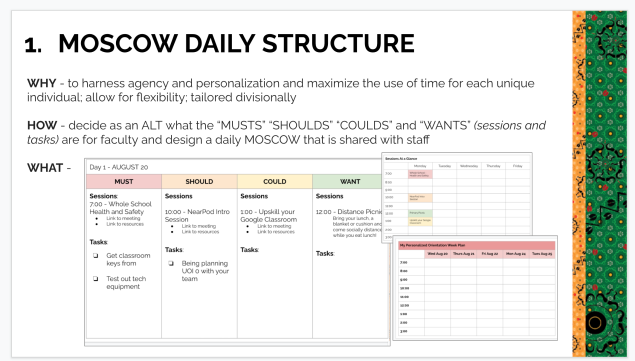





Hopefully with an orientation week that respects and supports teacher agency, we can not only personalize the professional learning to each unique individual’s needs and interests, but also maximize everyone’s time to ensure that every minute is purposefully… while at the same time modeling some of the philosophies and practices we hope to see teachers use with their learners!
In-House Experts
Leaders know some stuff. Leaders do not know everything. And that’s okay. Now more than ever leaders must look to the teachers who were on the ground during remote emergency learning last spring to harness their experience and expertise as we prepare for another unprecedented year.
Myself and my principal have tried to keep this in mind as much as possible, as we build our orientation week.
We’ve invited teachers to help curate resources that can be used in orientation and through the year.

We’ve invited teachers to lead workshops during orientation in the area of their expertise.

We’ve invited teachers to contribute to criteria on diagnostic tools.

We hope to invite and make space for teachers to share their learning and passions during orientation week.

Space for Voice
We know this is a challenging time for all. Lots of questions, uncertainty, nerves, fears and excitement for starting the year. So we’ve tried to carve our space for teachers’ voice.
One of the ways we are doing that is offering drop-in office hours for them to pop by and have a space for whatever it is they need space for.

Respect for Summer
Did I mention we are all still on summer holiday!? So we’ve been very careful to ensure all of our approaches are invitations, but not expectations. We know for some teachers August is still a protected time for rest and relaxation – great. We also know for other educators, in August a switch gets flicked and there is a burst of energy and interest in thinking about and working on the year ahead – great. And for some educators… it’s somewhere in-between – great.
So as much as possible, we are trying to be mindful of all those different perspectives and create structures that allow individuals to choose how much they participate based on what they feel is best for them at this moment in time.

I’m sure there is MUCH more we could be doing, and hopefully we will continue to challenge ourselves and one another on the leadership team to keep finding and making space for inclusive practices that flatten hierarchical structures, harness expertise regardless of position and see the humanness of each individual within an organization.
How are you respecting and supporting the agency of your teachers?
How are you building and protecting space for teacher’s voice choice and ownership?
How are you modeling with teachers, what you expect in the classroom?

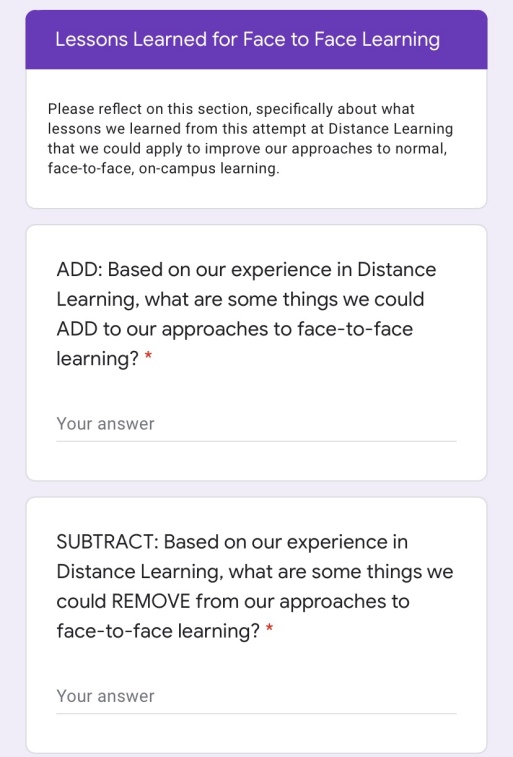








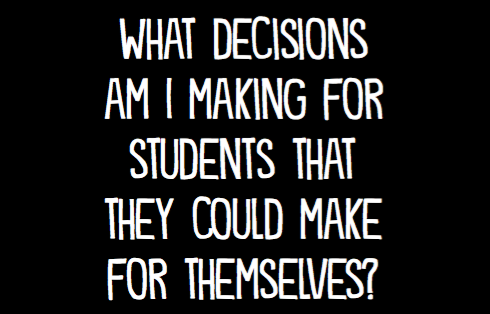






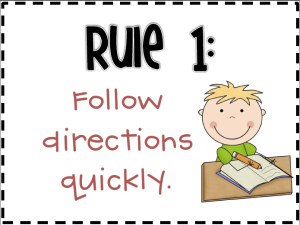

 .
.

